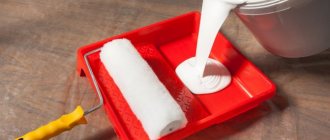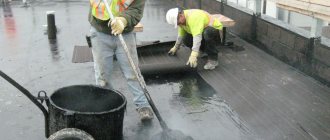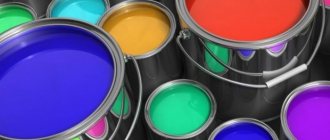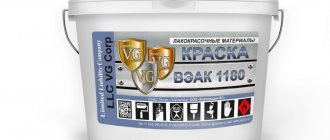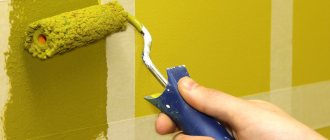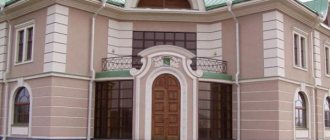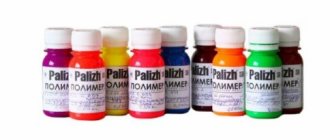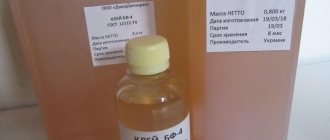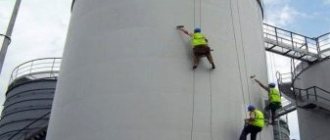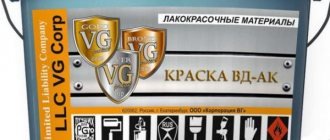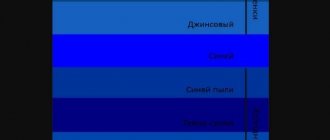GOST 8292-85
GOST 8292-85 Group L18
STATE STANDARD SOYU3A SSR
OIL PAINTS, COLORED, THICKLY GRATED Technical specifications Oil and paste color paints. Specifications
OKP 23 1710
Date of introduction 1987-01-01
INFORMATION DATA
1. DEVELOPED AND INTRODUCED by the Ministry of Chemical Industry DEVELOPERS
V.B. Manerov, V.M. Makarova, I.P. Gnezdova, L.V. Kozlov, V.V. Sashevsky
2. APPROVED AND ENTERED INTO EFFECT by Resolution of the USSR State Committee on Standards dated December 18, 1985 N 4158
3. Inspection frequency: once every five years
4. INSTEAD OF GOST 695-77, GOST 8292-75 and GOST 8866-75* __________________ * The text of GOST 8292-85 (official publication - M.: Standards Publishing House, 1986) provides information about the cancellation of GOST 8866-76. — Note.
5. REFERENCE REGULATIVE AND TECHNICAL DOCUMENTS
| Designation of the referenced technical document | Number of paragraph, subparagraph |
| GOST 9.403-80 | 1.7, 4.8 |
| GOST 9.407-84 | Introductory part |
| GOST 12.3.005-75 | 2.2 |
| GOST 12.4.011-89 | 2.5 |
| GOST 12.4.021-75 | 2.3 |
| GOST 17.2.3.02-78 | 2.8 |
| GOST 190-78 | 1.3 |
| GOST 1003-73 | 1.5, 4.2 |
| GOST 2768-84 | 4.4 |
| GOST 3134-78 | 1.4 |
| GOST 5233-89 | 1.7 |
| GOST 6589-74 | 1.7 |
| GOST 6613-86 | 4.2 |
| GOST 6709-72 | 4.8 |
| GOST 7931-76 | 1.3 |
| GOST 8135-74 | Introductory part |
| GOST 8784-75 | 1.7 |
| GOST 8832-76 | 4.2 |
| GOST 9045-93 | 4.2 |
| GOST 9980.1-86 | 3.1 |
| GOST 9980.2-86 | 4.1 |
| GOST 9980.3-86 | 5.1 |
| GOST 9980.4-86 | 5.2 |
| GOST 9980.5-86 | 5.3 |
| GOST 13345-85 | 4.2 |
| GOST 16523-89 | 4.2 |
| GOST 17299-78 | 4.4 |
| GOST 17537-72 | 1.7, 4.4, 4.5 |
| GOST 19007-73 | 1.7 |
| GOST 19433-88 | 5.2 |
| GOST 21903-76 | 1.7, 4.7 |
| TU 21-0284461-058-90 | 4.2 |
6. The validity period was removed by Decree of the USSR State Standard of December 27, 1991 N 2237
7. REISSUE (June 1994) with Amendment No. 1, approved in December 1991 (IUS 4-92)
This standard applies to thickly ground oil colored paints, which are a paste consisting of pigments and fillers or the corresponding pigment (iron lead according to GOST 8135-74, mummy, ocher), rubbed on drying oil with or without the introduction of a drier. The paints, after being diluted with drying oil to a painting consistency, are intended for finishing work and for painting metal and wooden products used indoors and in atmospheric conditions in areas with a temperate climate. Coatings with thickly rubbed oil colored paints intended for use in atmospheric conditions, in two layers on metal, retain protective properties in a temperate climate for 1.5 years up to a score of no more than A32. Protective properties are assessed according to GOST 9.407-84. Paints are applied to the surface with a brush, roller or pneumatic spraying. The requirements of paragraphs 8 and 9 of Table 2 are recommended. The remaining requirements of the standard are mandatory. (Changed edition, Amendment No. 1).
TECHNICAL REQUIREMENTS
1. TECHNICAL REQUIREMENTS
1.1. Depending on the purpose, oil-based thickened paints are produced in the brands and colors indicated in Table 1, with the corresponding OKP codes.
Table 1
| OKP code for the brand | |||||
| Name of paint, color | MA-015 | MA-015 red lead iron | MA-015 mummy | MA-015 ocher | MA-025 for indoor use |
| for use in atmospheric conditions | |||||
| Thickly grated colored oil paints: | 23 1712 2700 05 | 12 1712 2800 02 | 23 1712 3000 00 | 23 1712 3100 08 | 23 1712 2100 01 |
| red | 23 17122106 06 | ||||
| dark red | 23 1712 2164 07 | ||||
| creamy | 23 1712 2714 10 | 23 1712 2114 06 | |||
| dark yellow | 23 1712 2762 02 | 23 1712 2162 09 | |||
| 209 | 23 1712 2108 04 | ||||
| green | 23 1712 2708 08 | 23 1712 2143 01 | |||
| pistachio | 23 1712 2743 05 | 23 1712 2129 10 | |||
| yellow-green | 23 1712 2171 08 | ||||
| blue 424 | 23 1712 2771 01 | 23 1712 2110 10 | |||
| blue 475 | 23 1712 2710 03 | 23 1712 2107 05 | |||
| blue | 23 1712 2160 00 | ||||
| dark gray | 23 1712 2760 04 | 23 1712 2196 10 | |||
| light beige | 23 1712 2796 03 | 23 1712 2117 03 | |||
| beige | 23 1712 2717 07 | 23 1712 2109 03 | |||
| brown | 23 1712 2709 07 | ||||
| red-brown | 23 1712 2858 06 | ||||
| brownish red | 23 1712 3058 04 | ||||
| from yellow to light brown | 23 1712 3184 10 | ||||
1.2. Thickly ground oil paints must be manufactured in accordance with the requirements of this standard according to the recipe and technological regulations approved in the prescribed manner.
1.3. Before use, thickly ground oil paints are diluted with drying oils in an amount of 20-30% (for brands MA-015 and MA-025) and 30-40% (for brands MA-015 red lead, MA-015 mummy, MA-015 ocher) by weight thick rubbed paint. Paints of brands MA-015, MA-015 red lead, MA-015 mummy, MA-015 ocher are diluted with natural drying oils (GOST 7931-76) or combined K-3, K-5. Paints of the MA-025 brand are diluted with natural drying oils, “Oxol” (GOST 190-78) or combined K-2, K-3, K-5. Before use, it is allowed to dilute paints of the brands MA-015, MA-015 red lead, MA-015 mummy, MA-015 ocher with Oxol drying oil, and the paints are used only for indoor coatings.
1.4. After dilution with drying oil, paints are, if necessary, diluted with white spirit (nefras -155/200) (GOST 3134-78) in an amount of no more than 5% by weight of the paint.
1.3, 1.4. (Changed edition, Revised, No. 1).
1.5. When using ocher, up to 2% of NF-1 grade (GOST 1003-73) or ZhK-1 grade drier is added by weight of the paint.
1.6. The method of using oil-based colored thick-set paints intended for retail trade is indicated in reference Appendix 1, the density - in reference Appendix 2. (Changed edition, Amendment No. 1).
1.7. In terms of physical and chemical parameters, paints must comply with the requirements and standards specified in Table 2.
table 2
| Standard for brands | ||||||
| Indicator name | MA-015 | MA-015 red lead iron | MA-015 mummy | MA-015 ocher | MA-025 | Test method |
| 1. Paint film color: | Must be within the permissible deviations established by the “Card Index” color samples (standards) or control color samples | Must be within the permissible deviations established by color control samples | Must be within the permissible deviations established by the “Card Index” color samples (standards) or control color samples | According to clause 4.3 | ||
| red | — | — | — | — | 42, 44 | |
| Dark red | — | — | — | — | 5, color reference sample | |
| cream | 200, 201 | — | — | — | ||
| dark yellow 209 | 209, color control sample | 200, 201 | ||||
| — | — | — | 209, color control sample | |||
| green | 304, color control sample | — | — | — | 304, color control sample | |
| 309, control | ||||||
| pistachio | color swatch | — | — | — | 309, color control sample | |
| yellow-green | — | |||||
| blue 424 | 424,423 | 350, 331 | ||||
| blue 475 | 475, color control sample | 424, 474 | ||||
| 475, 434 | ||||||
| blue | — | 476, 427 | ||||
| dark grey | 526, 509 | 526, 509 | ||||
| light beige | 621, color control sample | 621, color control sample | ||||
| beige | 689, 690 | 689, 690 | ||||
| brown | 619, 623 | 619, 623 | ||||
| red-brown | — | Based on control color samples | — | |||
| brownish red | — | Same | — | |||
| yellow to light brown | — | » | — | |||
| 2. Mass fraction of film-forming substance, %, not less: | According to GOST 17537-72 and clause 4.4 of this standard | |||||
| green | 14,0 | — | — | — | 12,0 | |
| blue | — | — | — | — | 11,0 | |
| beige | 12,5 | — | — | — | 12,0 | |
| brown | 14,0 | — | — | 11,0 | ||
| other colors | 12,5 | 12,4 | 13,0 | 24,0 | 10,0 | |
| 3. Mass fraction of volatile substances, %, no more than: | According to GOST 17537-72 and clause 4.5 of this standard | |||||
| green, brown | 9,0 | — | — | — | 7,0 | |
| blue | — | — | — | — | 7,0 | |
| beige | 7,0 | — | — | — | 7,0 | |
| other colors | 7,0 | 6,5 | 7,0 | 11,5 | 6,0 | |
| 4. Covering capacity of undried paint film, g/m, not more than: | According to GOST 8784-75, section 1 | |||||
| red | — | — | — | — | 100 | |
| dark red | — | — | — | — | 100 | |
| creamy | 225 | — | — | — | 200 | |
| dark yellow 209 | 140 | — | — | — | 140 | |
| green | 70 | — | — | — | 100 | |
| pistachio | 90 | — | — | — | 135 | |
| yellow-green | — | — | — | — | 140 | |
| blue 424 | 100 | — | — | — | 100 | |
| blue 475 | 95 | — | — | — | 100 | |
| blue | — | — | — | — | 100 | |
| dark gray | 65 | — | — | — | 100 | |
| light beige | 160 | — | — | — | 160 | |
| beige | 85 | — | — | — | 120 | |
| brown | 65 | — | — | — | 65 | |
| other colors | — | 35 | 65 | 180 | — | |
| 5. Degree of grinding, microns, no more | 50 | 45 | 45 | 40 | 50 | According to GOST 6589-74 |
| 6. Drying time at temperature (20±2) °C to degree 3, hours, no more | 24 | 24 | 24 | 24 | 24 | According to GOST 19007-73 |
| 7. Film hardness, according to a pendulum device, conventional units, not less than: | According to GOST 5233-89 | |||||
| type M-3 | 0,13 | 0,12 | 0,12 | 0,11 | 0,10 | |
| type TML (pendulum B) | 0,05 | 0,05 | 0,05 | 0,05 | 0,05 | |
| 8. Conditional light fastness of the film, h, not less | 2 | — | — | — | — | According to GOST 21903-76 and clause 4.7 of this standard |
| 9. Resistance of the film to the static effects of water at a temperature of (20±2) °C, h, not less | 2 | — | — | — | — | According to GOST 9.403-80, section 2, and clause 4.8 of this standard |
1.8. The correspondence of the changed designations of paint colors with the previously accepted ones is given in reference Appendix 3. Notes:
1. The norm for indicator 7 for a pendulum device of type TML (pendulum B) is not rejected until 01/01/95. Definition is required.
2. The norm for indicator 7 for a pendulum device of type M-3 is valid until 01/01/95. (Changed edition, Amendment No. 1).
What do the standards regulate?
Brands of oil compositions depend on the type of drying oil used.
Manufacturers produce thickly grated oil compositions, which must be diluted with drying oil before use, and liquid ones that are ready for use.
Some provisions of the documents
GOST 8292 85 for oil-based colored thick-based paints defines the following brands:
- MA-021 - on natural drying oil;
- MA-015 and MA-025 – on a combined or natural film-forming substance;
- GF-023 – on glyphthalic drying oil;
- PF-024 - on a pentaphthalic analogue.
The main characteristics of thickly grated oil-based paints and varnishes must comply with this GOST.
Thickened paints should be diluted before use.
- Grades MA-015 and 025 – 20/30% drying oil of the total volume of material. The composition of MA-15 based on red lead, mummy and ocher pigments is diluted with 30/40% film former.
- MA-015 paints in all types of colors are diluted with natural drying oils or combined analogs of K/3 and K/5.
- Compositions MA-025 are diluted with natural drying oil, “Oxol” or combined oils K/2, K/3 and K/5.
- Analogues of the GF and PF brands are diluted to the desired consistency with appropriate film formers.
- Oil paint according to State Standard 8292 85, after diluting it with drying oil, can be diluted with a solvent as necessary. Its volume should be no more than 5% of the mass of the paintwork material.
Some of the characteristics of the compositions, according to the standard.
Note! To obtain a high-quality liquid coating ready for use, oil paints in accordance with State Standard 10503 71 must be diluted in a certain ratio. It is 50 g of oil per 1 kg of thickly grated paint.
The most important material characteristics
The photo shows paint made according to the interstate standard.
To choose the paint correctly, you need to be guided by its technical characteristics. It should be taken into account that since 2003, State Standard 30884 2003 has been in force in the Russian Federation for ready-to-use oil paints.
This standard is interstate, i.e. it is accepted in all CIS countries.
- The mass fraction of film-forming agent in paintwork materials must be at least 26% . This component determines the ability of the finish to create a monolithic coating when applied to the base. The more film former, the better the paint will adhere to the surface. However, this also complicates its preservation.
If the paint is sealed in a can, it can last for years. After contact with air, it cannot be stored for a long time. The composition will harden quickly.
- The proportion of volatile substances in the paint should not be more than 10 percent . These components evaporate at temperatures above +20 degrees. Such substances have a pungent odor and are harmful to our health.
- The degree of grinding of paint components . The finishing features depend on it. You can create two types of coating with your own hands: smooth (the grinding of components is less than 90 microns) and a fine-grained analogue (all paint particles have a diameter of less than 90 microns).
The viscosity of the paint can be checked with a capillary viscometer.
- The viscosity of the dye affects its fluidity and drying period . The first indicator should be 65/140 units. The maximum period during which oil paints harden according to State Standards should be one day.
- The most important characteristic is the hardness of the paint coating . This value determines the ability of the film to prevent solid objects and bodies from penetrating deep into it. According to State Standards, oil-based thick paints must have this indicator of at least 0.13 units.
- A separate point of characteristics is the hygroscopicity of the coating, i.e. its ability to transmit moisture (in connection with it - the paint’s resistance to water).
For compositions intended for external work, the value should approach zero. A resistance level of 0.5/1 is acceptable for compositions used for interior finishing work.
SAFETY REQUIREMENTS
2.1. Paints are a fire hazardous and toxic material, which is due to the properties of the substances included in their composition: gasoline solvent for the paint and varnish industry, lead dust. Solvent vapors contained in paints have an irritating effect on the mucous membranes of the eyes, respiratory tract and skin. Lead crop causes changes in the nervous system, blood, and blood vessels.
2.2. During the production, use and testing of paints, safety and industrial sanitation rules in accordance with GOST 12.3.005-75 must be observed.
2.3. All work related to the manufacture, testing and use of paints must be carried out in rooms equipped with supply and exhaust ventilation in accordance with GOST 12.4.021-75 and fire-fighting equipment.
2.4. The maximum permissible concentrations of solvent vapors and lead compounds in the air of the working area of premises, as well as the fire hazard characteristics of solvent gasoline for the paint and varnish industry are given in Table 3.
Table 3
| Temperature, °C | |||||
| Component name | Maximum permissible concentration of vapors in the air of the working area of industrial premises, mg/m | flashes | self-ignition | Vapor flammability limits, % (by volume) | Hazard Class |
| White spirit (nefras -155/200) | 300 | 33 | 270 | 1,4-6,0 | 4 |
| Inorganic lead compounds | 0,01 | — | — | — | 1 |
(Changed edition, Amendment No. 1).
2.5. Persons associated with the production and use of paints must be provided with special clothing and personal protective equipment in accordance with GOST 12.4.011-89. To protect hands, pastes such as “biological gloves” should be used.
2.6. Fire extinguishing agents: sand, felt, foam, water, fire extinguishing powders.
2.7. Paint coatings after drying do not have a harmful effect on the human body.
2.8. Monitoring compliance with maximum permissible emissions (MPE) - in accordance with GOST 17.2.3.02-78. Waste disposal is carried out in accordance with the sanitary rules for the accumulation, transportation, neutralization and disposal of toxic industrial waste. (Introduced additionally, Amendment No. 1).
ACCEPTANCE
3.1. Rules for acceptance of paints - according to GOST 9980.1-86.
3.2. The need for testing according to the recommended indicators in Table 2 is established by the manufacturer and the consumer when concluding a contract for the supply of products.
3.3. Every hundredth batch is subjected to periodic testing for compliance with all requirements and standards of this standard.
3.4. If unsatisfactory results of periodic tests are obtained, the manufacturer checks each batch until satisfactory test results are obtained in a row of at least three batches. Sec. 3. (Changed edition, Amendment No. 1).
TEST METHODS
4.1. Sampling - according to GOST 9980.2-86.
4.2. Preparation of samples for testing Before testing, the paint is thoroughly mixed. The mass fraction of film-forming substances and volatile substances, as well as the degree of grinding, are determined without diluting the paint. To determine other indicators, paints are diluted to a painting consistency with drying oils in an amount of 20-30% for brands MA-015, MA-025 and 30-40% for brands MA-015 red lead, MA-015 mummy, MA-015 ocher by weight of thickly rubbed paints: paints brand MA-015, MA-015, red lead (mummy, ocher) - natural drying oil or combined K-3, K-5; MA-025 brand paints - Oxol drying oil or combined K-2. The diluted paints are filtered through a 056 N sieve (GOST 6613-86) and applied with a brush to the prepared plates. Dryer grade NF-1 (GOST 1003-73) or grade ZhK-1 is added to paint made with ocher up to 2% by weight of the paint. Plates for applying paints are prepared in accordance with GOST 8832-76, section 3. The color of the film, the drying time of the paint, the conditional light fastness of the film and its resistance to static action of water are determined on plates made of steel grades 08kp and 08ps in accordance with GOST 16523-89 or from cold-rolled steel in accordance with GOST 9045-93, size 70x150 mm and thickness 0.5-1 .0 mm or on plates made of black tin according to GOST 13345-85, size 70X150 mm and thickness 0.26-0.32 mm. Film hardness is determined on special-purpose glass plates measuring 90X120 mm and thickness 1.2 mm according to TU 21-0284461-058-90. To determine the color, the paint is applied until the substrate is completely covered and dried for 24 hours at a temperature of (20±2) °C. To determine the drying time and hardness of the film, paint is applied with a brush in one layer, to determine the conditional light resistance of the film and the resistance of the film to the static effects of water - in two layers. Each layer is dried for 24 hours at a temperature of (20±2) °C. When determining the conditional light resistance of the film, the first layer is dried at a temperature of (20±2) °C for 24 hours, the second - for 120 hours. The coating thickness of a single-layer coating after drying should be 25-30 microns, two-layer - 50-60 microns.
4.3. The color of the dried paint film is determined by visual comparison with the color of the corresponding color samples (standards) of the “Color Standard Card Files” or control color samples in natural or artificial daylight diffused light. The samples being compared should be in the same plane at a distance of 300-500 mm from the observer’s eyes at a viewing angle that excludes surface gloss. In case of disagreement in color assessment, the color determination in natural daylight is taken as the result.
4.2, 4.3. (Changed edition, Amendment No. 1).
4.4. The mass fraction of the film-forming substance in the paint is determined according to GOST 17537-72. Acetone (GOST 2768-84) or a mixture of acetone and ethyl alcohol (GOST 17299-78) in a ratio of 3:2 by volume is used as a solvent.
4.5. The mass fraction of volatile substances is determined according to GOST 17537-72. A sample weighing 1.5-2.0 g is placed in a drying oven and kept at a temperature of (140±2) °C. The first weighing is carried out after 1 hour of exposure in the cabinet, and subsequent weighings are carried out every 30 minutes until a constant weight is achieved. It is allowed to determine the mass fraction of volatile substances under an infrared lamp at a temperature of (140±2) °C. In case of disagreement in the assessment of the mass fraction of volatile substances, the final result is determination in an oven.
4.6. (Deleted, Amendment No. 1).
4.7. The conditional light resistance of the film is determined according to GOST 21903-76, method 3. The use of PRK-2 or DRT-375 lamps is allowed. The distance of the samples from the surface of the lamps should be (350±5) mm. The steady state of the lamp should be as follows: voltage (120±6) V, current (3.75±0.25) A. The film is irradiated for the time specified in clause 8 of Table 2. Irradiated samples are examined with the naked eye and compared with non-irradiated samples. Slight loss of gloss of the paint film and slight color change are acceptable. (Changed edition, Amendment No. 1).
4.8. The resistance of the film to the static effects of water is determined according to GOST 9.403-80, section. 2. Samples are placed in distilled water (GOST 6709-72) and kept in it for the time specified in paragraph 9 of Table 2. After testing, the samples are kept in air at a temperature of (20±2)°C for 2 hours and the appearance of the film is examined. After testing, the film should not peel off, wrinkle or have bubbles.
Slight loss of gloss and slight change in film color are acceptable.
Thickly grated colored oil paints. Specifications
current This standard applies to thickly rubbed oil colored paints, which are a paste consisting of pigments and fillers or the corresponding pigment (iron lead according to GOST 8135-74, mummy, ocher), rubbed on drying oil with or without the introduction of a drier. The paints, after being diluted with drying oil to a painting consistency, are intended for finishing work and for painting metal and wooden products used indoors and in atmospheric conditions in areas with a temperate climate. Coatings with thickly rubbed oil-based colored paints intended for use in atmospheric conditions, in two layers on metal, retain protective properties in a temperate climate for 1.5 to a point of no more than A32. Protective properties are assessed according to GOST 9.407-84. Paints are applied to the surface by brush, roller or pneumatic spraying.

